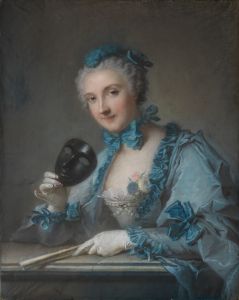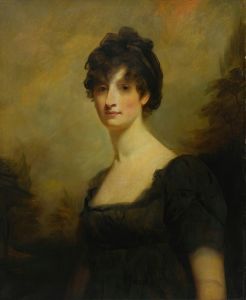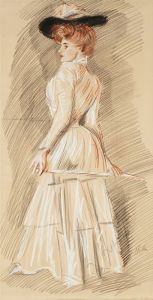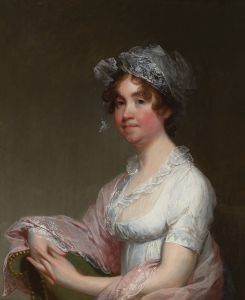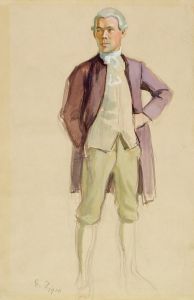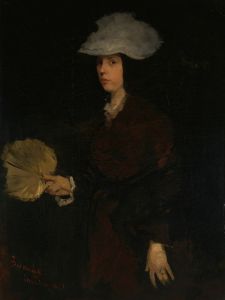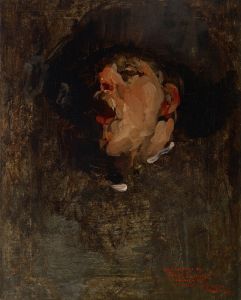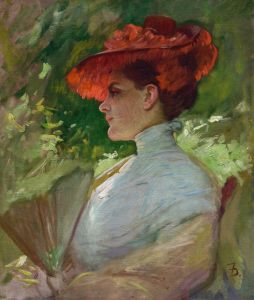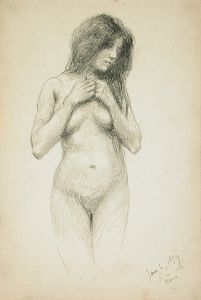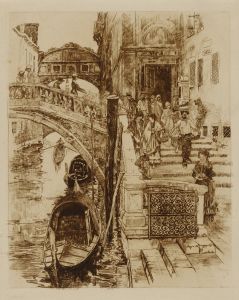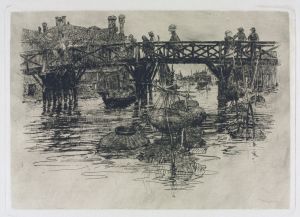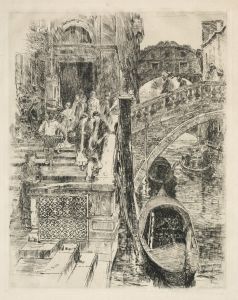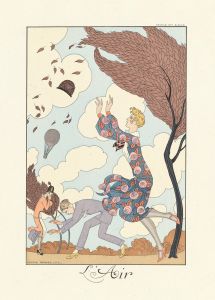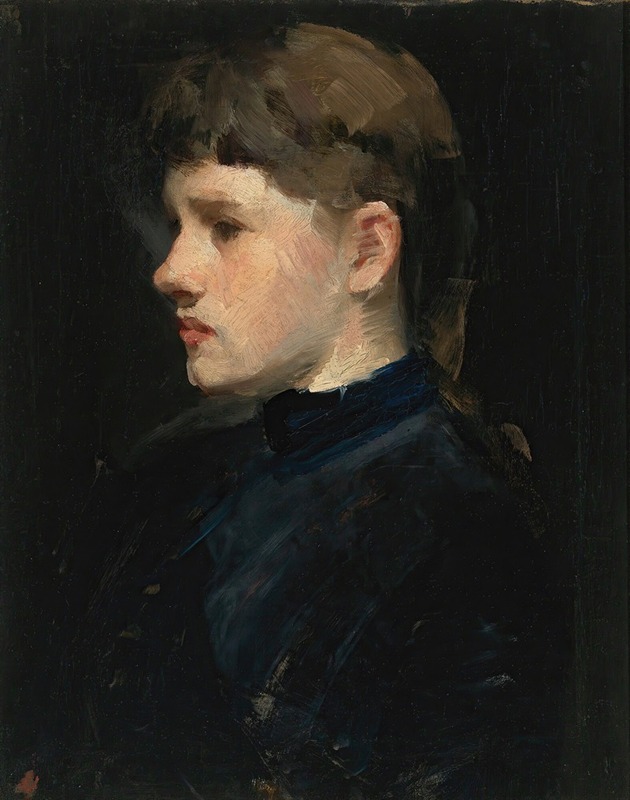
Portrait Of A Lady
A hand-painted replica of Frank Duveneck’s masterpiece Portrait Of A Lady, meticulously crafted by professional artists to capture the true essence of the original. Each piece is created with museum-quality canvas and rare mineral pigments, carefully painted by experienced artists with delicate brushstrokes and rich, layered colors to perfectly recreate the texture of the original artwork. Unlike machine-printed reproductions, this hand-painted version brings the painting to life, infused with the artist’s emotions and skill in every stroke. Whether for personal collection or home decoration, it instantly elevates the artistic atmosphere of any space.
Frank Duveneck's "Portrait of a Lady" is a notable example of 19th-century American portraiture, reflecting the artist's skill and the influence of European art on his work. Duveneck, born in 1848 in Covington, Kentucky, was a prominent figure in American art, known for his robust brushwork and keen ability to capture the essence of his subjects. He studied at the Royal Academy of Munich, where he was influenced by the dark tonalities and strong contrasts characteristic of the Munich School.
"Portrait of a Lady" exemplifies Duveneck's mature style, which combines the technical precision learned in Europe with a distinctly American sensibility. The painting features a female subject, whose identity remains unknown, depicted with a sense of realism and immediacy. Duveneck's use of light and shadow in the portrait demonstrates his mastery of chiaroscuro, a technique that enhances the three-dimensionality of the figure and adds depth to the composition.
The lady in the portrait is dressed in attire typical of the late 19th century, which provides insight into the fashion and cultural norms of the period. Her expression is serene yet introspective, suggesting a depth of character and personality that Duveneck was adept at conveying. The background of the painting is understated, ensuring that the viewer's focus remains on the subject's face and expression.
Duveneck's work, including "Portrait of a Lady," was well-received in both America and Europe. He was part of a group of American artists who studied abroad and brought back European techniques and styles, which they adapted to American themes and subjects. This cross-cultural exchange enriched the American art scene and contributed to the development of a unique American artistic identity.
Throughout his career, Duveneck was associated with several art movements and groups, including the Munich School and the American Impressionists. He was also a respected teacher, influencing a generation of artists through his work at the Cincinnati Art Academy and his own art school in Florence, Italy. His teaching emphasized the importance of direct observation and the expressive potential of paint, principles that are evident in "Portrait of a Lady."
The painting is part of several public and private collections, reflecting its enduring appeal and significance in the history of American art. Duveneck's ability to capture the subtleties of human expression and his technical prowess make "Portrait of a Lady" a valuable study for those interested in portraiture and the evolution of American art in the late 19th century.
In summary, Frank Duveneck's "Portrait of a Lady" is a testament to his skill as a portraitist and his role in bridging European and American art traditions. The painting remains an important work for its artistic quality and its representation of the cultural and artistic exchanges of its time.





